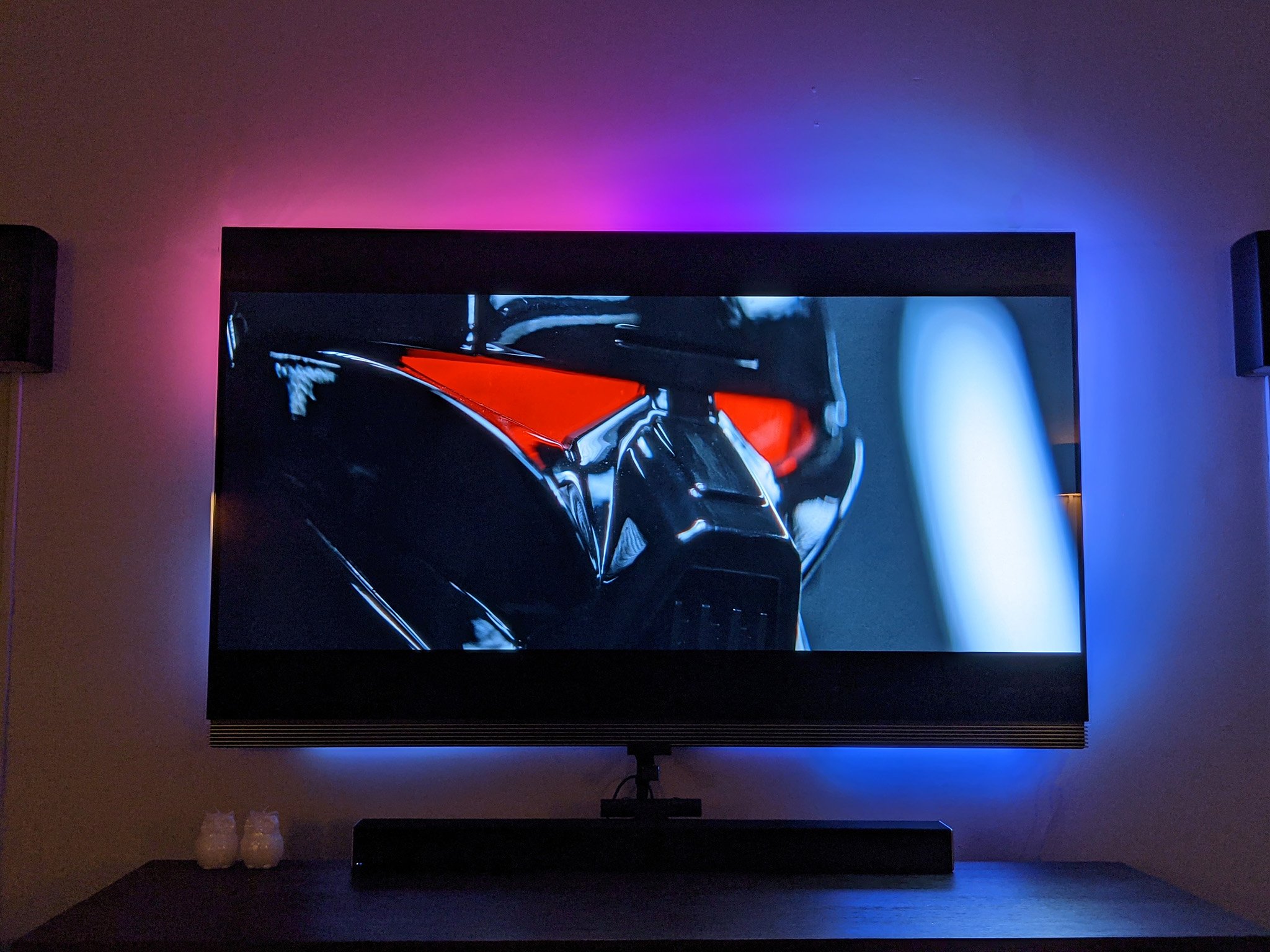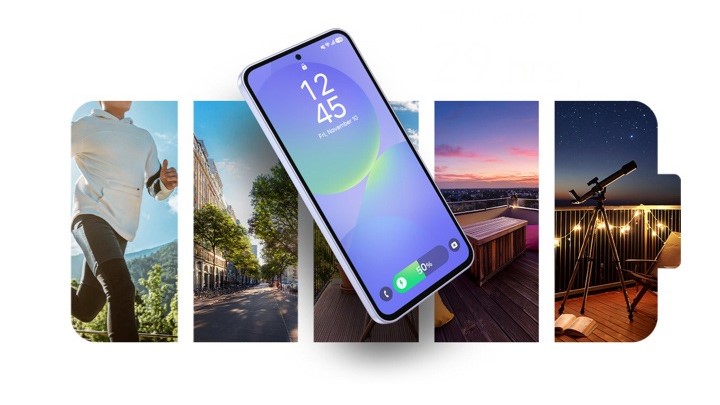Android Central Verdict
Bottom line: Govee Immersion TV backlights set the mood in a room like nothing else can. They're an astoundingly inexpensive way to add a significant amount of depth to your TV and movie viewing experience, making your home setup feel more like going to a movie theater than ever before.
Pros
- +
Individual LED light changes and zones
- +
Considerably cheaper than the competition
- +
No HDMI box
- +
Very bright
- +
Customizable themes and modes
- +
Solid integration with Alexa/Google Home
Cons
- -
Camera can be an eyesore
- -
Colors are sometimes a bit odd
Why you can trust Android Central
Bias lighting isn't anything new, but few products go above and beyond expectations in the way the Govee Immersion TV backlight does. If you picked up one of the best TVs for PS5 or Xbox recently, you owe it to yourself to spend the $70 that Govee Immersion costs. Unlike the Philips Hue Play system, Govee's design utilizes a camera that sees the screen instead of requiring your HDMI cables to be plugged into a dedicated box. The results couldn't be more stunning.
Govee has two products in the Immersion RGBIC line, but the LED light strip is the more deluxe of the two options. Designed for 55-inch and 65-inch TVs — I ran it behind a 65-inch TV for this review — these strips run the perimeter of the back of your TV and shine light on the wall behind the TV. The key here is that the camera, which can be placed on top or below the TV — an upgrade from the previous version of this product — sees the TV screen and changes each individual LED on the light strip individually. That individual LED color change based on the TV's image is what sets Govee's product apart from all others at this price point and makes it a winning product.
Setting the mood
Govee Immersion TV backlight: What I like
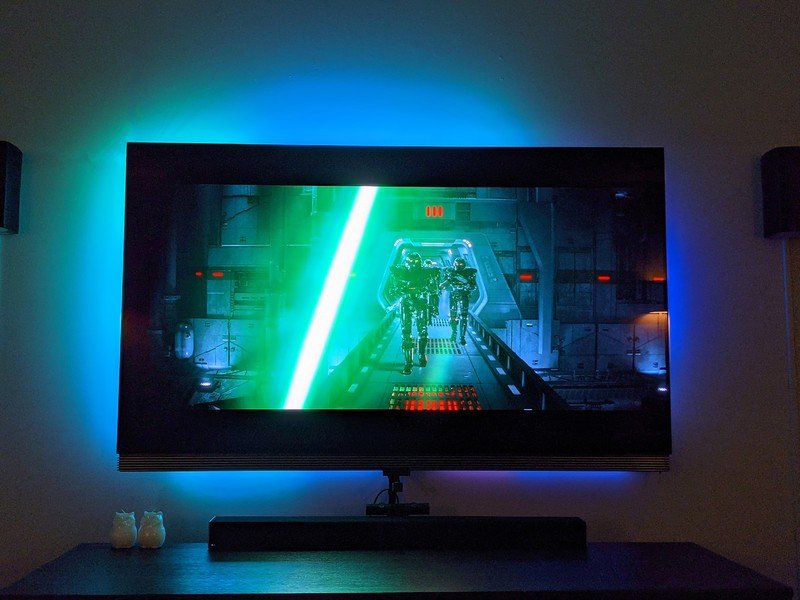
Govee's choice of using a camera to see your screen instead of using an HDMI box to plug inputs into is, overall, a far superior solution. Not only does it make setup much easier, but it also means that you'll never worry about some new video protocol not working with your aging HDMI box. It also means it works with all sources of video, including those running on a native app on your TV.
The first time I fired up Demon's Souls on my PS5, I watched as the Govee Immersion TV backlight cast the glow of a small campfire onto the back wall, and it hit me: this immersive lighting isn't just about making things look cool — it creates a very real dimension to the picture that simply didn't exist before. In the past, my concept of bias lighting for a TV mostly revolved around two key areas: adding additional contrast to the image and just plain looking cool.
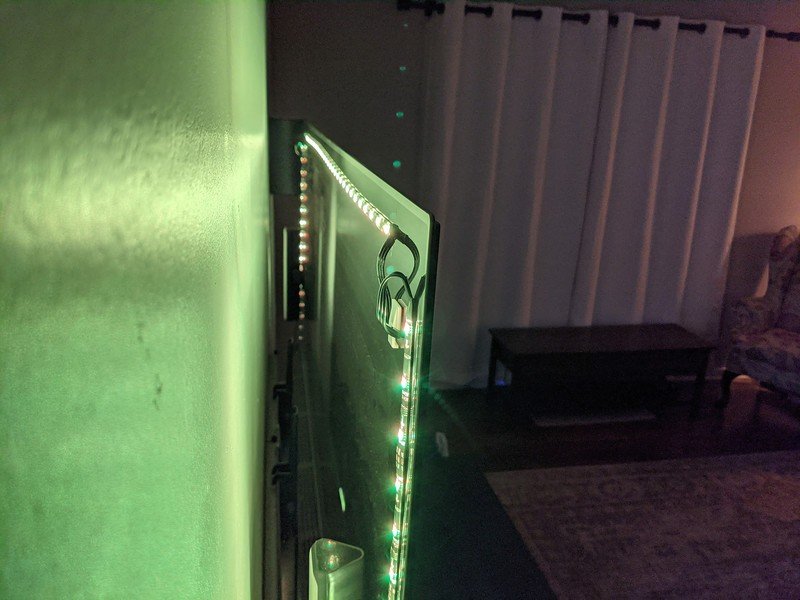
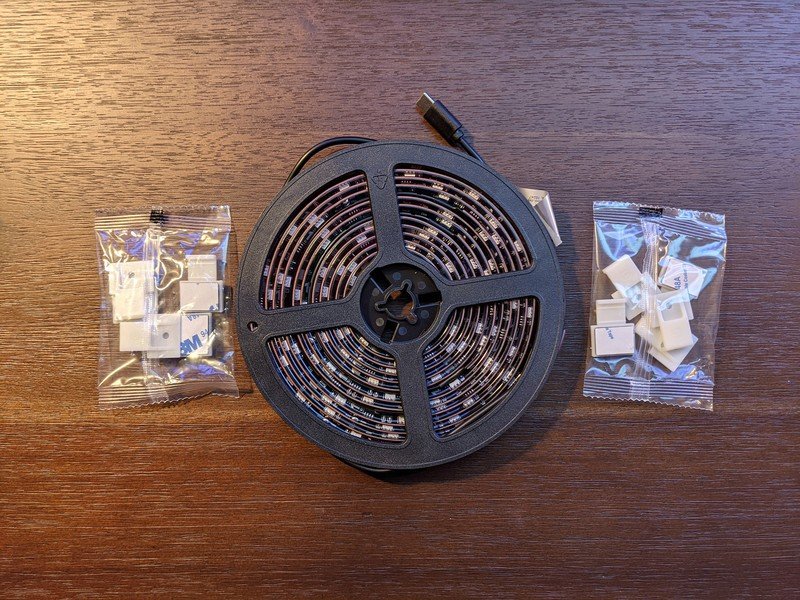
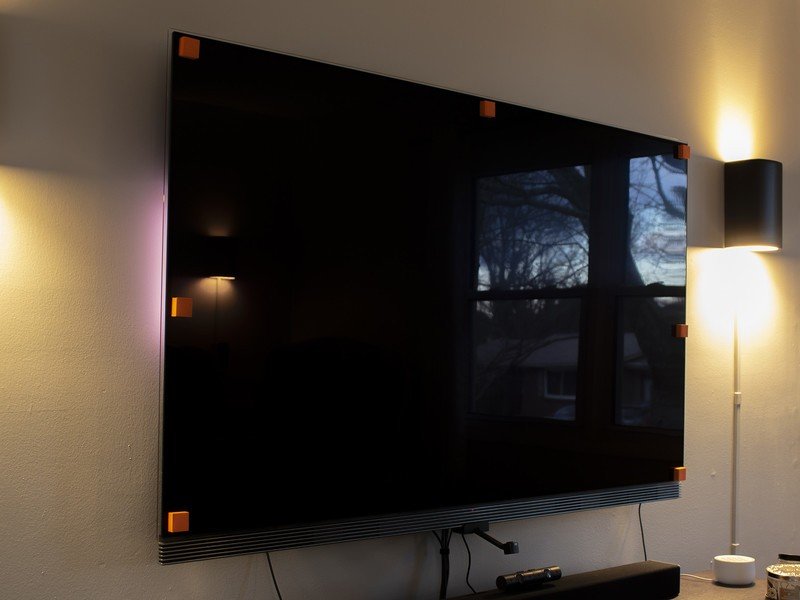
In addition to these two important traits, reactive bias lighting helps accentuate the moods of individual scenes based on the colors present on the screen. A bleak, dystopian movie like The Matrix tends to stick to green hues to create a cold and almost otherworldly feeling within the machine-created world. Conversely, a movie like Avatar might stick to purples to create a sense of wonder and mysticism. Govee Immersion TV Backlights do an excellent job of picking up these colors, helping to cast the emotions of light beyond your TV's screen.
Immersive lighting isn't just about making things look cool — it creates a very real dimension to the picture that simply didn't exist before.
Likewise, video games tend to use colors in similar ways, usually executed differently, to create the same effect. The screen might glow red to indicate danger or low health, while an orange flash might indicate using a power-up or something similar. But it's not just the color of the LED that changes; it's also the brightness. If there's not enough luminance on the screen, say in a dark scene, the lights won't overpower the room. Rather, they'll dim down automatically and brighten back up when the content does. It's brilliant.
When set to Video mode on the app, the camera can be used to illuminate the entire strip as the average scene color or to more granularly change every LED's color and luminance based on what's on-screen. Some movies and TV shows work best with the single color setting, like a sitcom or drama. Still, content with more action tends to look particularly amazing with the individual LED color-changing option.
The individual LED setting is also ideal for video games since it mimics individual objects on the screen. In most games, this helps give objects a layer of depth they didn't have before, causing them to emanate outside of your TV screen and onto the wall behind. Govee offers several modes for its Immersion TV Backlights, including solid colors, customizable scenes and patterns, a music mode, movie mode, and a game mode.
Movie and game modes utilize the camera to adjust the lights based on what's happening on your TV, while music mode uses the microphone built-in to the communication box to adjust the light pattern. Music mode features four sub-modes that are all pretty nifty, but I found myself preferring the spectrum mode, which lights the strip from the top-left corner down to the bottom-right corner depending on the cadence and volume of the music. Personally, I doubt I'll use this mode much, but it's pretty cool if you're throwing a house party or have guests over.
The setup process is as straightforward as changing modes through the app.
The other two modes are simply for adding color to a wall and could easily be used seasonally to add a little festive flair to a room. There's also a DIY option where you can customize each LED to your liking, or head to the Lighting Effects Center and see what the community has cooked up. I found one that looks like the Northern Lights, which really added a perfect wintery mood to the room as it snowed outside.
The setup process is as straightforward as changing modes through the app, as the app walks you through the entire process. The LED Strips can be run clockwise or counter-clockwise around the TV, starting at the bottom corner. Likewise, the camera can be placed on the top or bottom of the TV to best facilitate your setup. The LED strips and camera plug into a small control box, which can be affixed to the back of the TV with an adhesive pad that comes pre-installed on the back. A pack of orange sticky squares is included to help with calibration, but I didn't feel like I needed them to line up the camera's view.
Could be an eyesore
Govee Immersion TV backlight: What I don't like
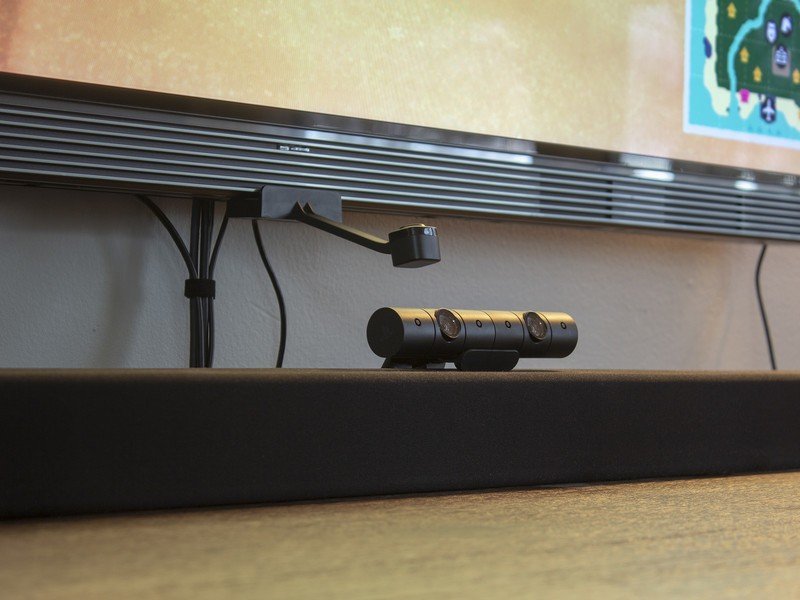
I hate to harp on the camera solution so much — partly because I have a PSVR camera sitting right below it and because it really is the best way to ensure compatibility with things like HDR10 and Dolby Vision — but there's no doubting a camera will be a deal-breaker for some people. I've shown this off to a few friends since setting it up and, while the response to the lights and the atmosphere is always emphatic excitement, the reveal of how it works was regularly met with feelings of disappointment. It's not that a camera is a bad thing by nature; it's just that having a camera stick 4-inches out from the top or bottom of the TV doesn't look great.
There's no doubting a camera will be a deal-breaker for some people.
That's a particularly unfortunate design for a product whose entire purpose is to beautify your setup, but, again, it's the better way to produce a reactive bias light than using an HDMI box that interprets the image and outputs the signal back to your TV. The other downside to using a camera is that the accuracy of the colors will entirely depend on the viewing angle of your TV. Presumably, this is why there's a saturation slider in the app. Still, LCDs are notorious for their terrible viewing angles, which display significantly lower contrast, dimmed colors when not viewing straight-on.
If your TV or living room gets bathed in light during the day, especially if there's a glare on the screen from the camera's angle, you're going to notice incorrect colors from the LED strips. At one point, I realized the lighting was consistently wrong and found out that I hadn't properly adhered the camera to the bottom of my TV. Realigning the camera and re-running calibration fixed this, but I have a feeling this might happen again based on how little surface area the underside of my TV the camera is able to stick to.
Lastly, I'd love to see deeper integration with Alexa and Google Assistant. At the moment, voice commands exist for powering the lights on and off, setting the brightness, and adjusting the color to a single color for the whole strip. There's no way to swap between movie and game modes by using your voice or routines, which, personally, would be far preferable to using an app. That extra friction point meant there were more than a few times where I forgot to change the mode based on what was on my TV.
The competition
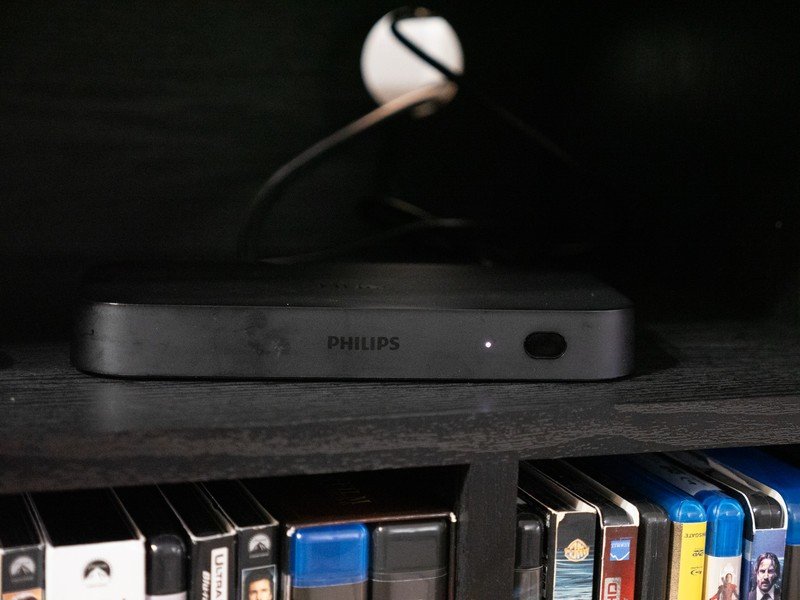
Philips Hue Play is, undoubtedly, the closest direct competition you'll find on the market. It looks like they might even be the same product from a surface level, but there are significant differences. Aside from the much higher price — $230 for the box, plus more for the light strips or bars, plus the need to have a Hue bridge — Hue Play is extremely limited in its functionality because it requires you to plug a source into the HDMI sync box. If you regularly use those apps built into your TV, Hue Play cannot sync the colors, while Govee Immersion doesn't have that limitation.
The LIFX Z-TV LED Strip retails for $70 and offers comparable brightness and LED quality to what Govee Immersion offers but doesn't include a way to sync the lights to what's happening on your TV. There's really no reason even to consider this product over Govee Immersion for TV lighting, especially since they're the same cost, as it's simply inferior.
An even more budget-friendly alternative is a Govee Wi-Fi LED strip, which comes in varying lengths for under $30. These LED strips can be controlled via the Govee Home app or via Alexa/Google Assistant, just like the Govee Immersion strips, but don't feature a way to sync with the TV. That's not a bad choice for a product that nets you some killer lighting options around the home for extremely cheap, but it's not quite on the same level as Govee Immersion, either.
Govee Immersion TV backlight: Should you buy
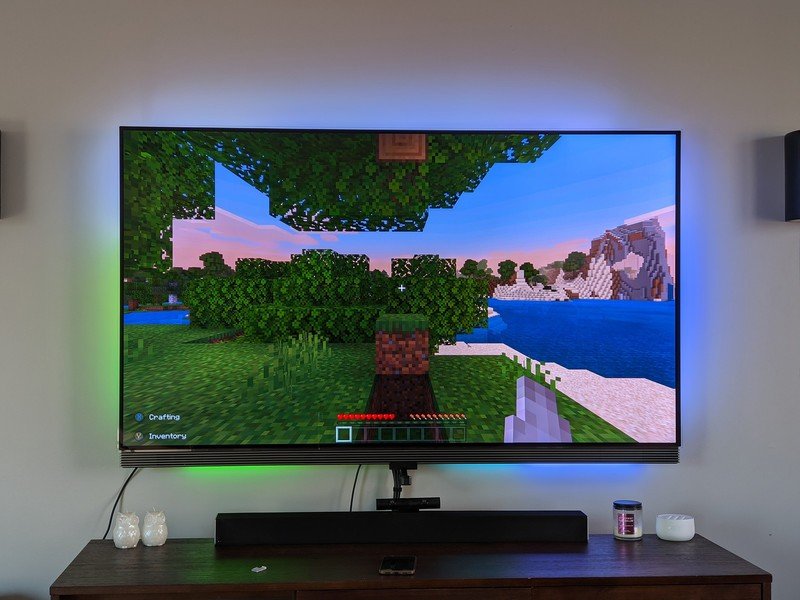
You should buy this if ...
You want brilliant colors behind your TV
There's no denying just how cool it looks to have backlights behind your TV that change color with what's on the screen. Whether you're watching movies, playing video games, listening to music, or just looking for a bit of extra ambiance in your room, Govee Immersion is an incredible way to do it.
You want that movie theater experience
While it's entirely possible that traditional movie theaters might become a thing of the past, that doesn't mean you have to sacrifice the immersive experience that a movie theater can bring. Govee Immersion lights add an extra layer of depth to what's happening on the screen and really help suck you into the experience.
You don't want to spend an arm and a leg
While Philips Hue Play gradient play strip features more LEDs that add more fine detail to the scene lighting behind your TV and can sync with other Hue lights in your home, you're going to pay an arm and a leg for that upgrade. Not only that but, because Philips Hue Play relies on the HDMI box to sync lights with what's happening on the TV, this solution will only work with set-top boxes that plug into your TV via HDMI. That's a huge miss for folks who use apps on their TV instead of a dedicated box.
You should not buy this if ...
You don't have a way to hide the camera
In my setup, I could easily "hide" the camera by placing it at the bottom of the TV, where it blends into my soundbar and PlayStation Eye camera. Some other setups might not work as well, and putting the camera on the top of the TV just doesn't look great. If the extra hardware doesn't bother you, though, then this may not apply.
The biggest disadvantage of the Govee Immersion TV backlight is, undoubtedly, the camera. While it proves to be the most capable way to sync all content with the lights, the camera is a less-than-beautiful design in a product whose entire purpose is to beautify your home theater with colored lighting. It's sort of an ironic negative in an otherwise nearly flawless product, but it also means that you're never going to run into a situation where new video technology isn't going to work with your lights.
4.5 out of 5
It's far more difficult to find faults in Govee's design and implementation, particularly because of the price. At about a fifth of the price of the Philips Hue Play system, you're getting a system that can sync lights to all kinds of content. Yes, even local TV apps and HDR10 and Dolby Vision content are controlled by a camera that can watch the screen. While that camera is probably the biggest negative of the system — as it can be quite the eyesore if you don't have the right setup to hide it — it's the most surefire way to work with any content that's displayed on your TV.

